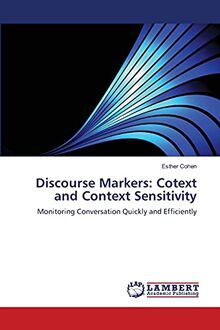
Until recently, the cross-linguistic phenomenon of discourse markers such as the English 'oh', 'like' and 'y(ou) know' has been considered part of poor linguistic performance. This book shows that they are actually a mono-functional verbal class, whose overall function is to monitor conversation. Every discourse is an interaction between the various participants' models of the world, i.e. a model of the ongoing conversation, knowledge of the world and contextually relevant factors. The use of a discourse marker signals an upcoming or undergone structural and/or referential adaptation of one of these models, which, in turn, generates a continuum of adaptations in the other models of the world involved in an ongoing conversation. Each discourse marker conveys specific processing, interpretative and alignment-status information and instructions. As such, discourse markers constitute an efficient, concise, economical and elegant means for facilitating fluent conversation. This analysis will fascinate parents, language teachers and, in fact, anyone using language, i.e. all of us.